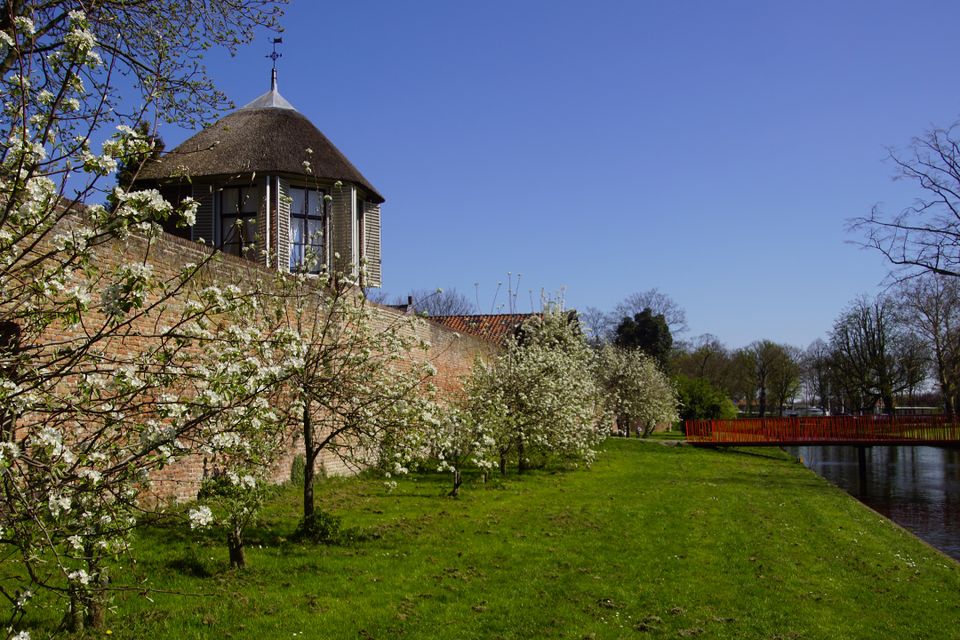
The past is never far away on a walk in and around Vianen town centre. The remains of the original defences can be found in various places: the Lekpoort, town walls and towers and canals. Within these defences, a mediaeval town arose from the surrounding villages. The town walls and town gates protected the residents of the town against enemy forces and bandits. The right to build town walls and other defences was therefore an important right that towns could be awarded in the Middle Ages.
In the years 1335 and 1336, Heilwich van Vianen and her …
The past is never far away on a walk in and around Vianen town centre. The remains of the original defences can be found in various places: the Lekpoort, town walls and towers and canals. Within these defences, a mediaeval town arose from the surrounding villages. The town walls and town gates protected the residents of the town against enemy forces and bandits. The right to build town walls and other defences was therefore an important right that towns could be awarded in the Middle Ages.
In the years 1335 and 1336, Heilwich van Vianen and her husband Willem van Duivenvoorde granted Vianen’s residents a variety of town rights, such as the right to organise markets, the right to judge themselves and the right to build defences. When constructing these defence works, existing locks and water rings were used as far as possible. To reduce costs, the bricks were re-used when building the town wall. Instead, the builders used so-called cases: enclosures measuring 80 x 80 x 180 cm filled with sand, lime and rubble.
In addition to protection against human attackers, the town walls have long been an important protection against the waters of the Lek. Until the construction of the current summer dike, the northern town walls kept the Lek at bay during high water levels.
Further reading: The Lekpoort, The Hofpoort, Vianen Castle, Vianen town centre.
